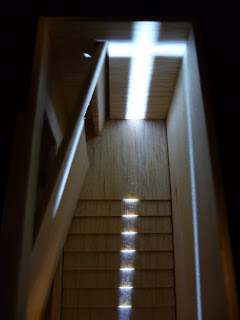"Transformation"
I decided to use the simplicity of a cube structure and shape to define the word I have chosen. For the poster, I decided to illustrate the transformation of a cube that started as a void, then slowly developed in 3 different stages into the more detailed cube.
For my model I have constructed a series of cubes that grow in size to indicate the direction I want the eye to move, from left to right. This is how I wanted my model to be read. My cube structure starts as a 2d image, on the surface of the board, that slowly grows to a 3d shape, with structures, and finally transforms into the final solid surface with intricate lined detailing on its surface. I came into this class with a white canvas, but with a basic outline as to what I was about to learn. As the weeks progress, so does the foundation of this model. The final cube represents a much more refined version as compared to the very first cube in the model.
Overall this workshop was really fun and although it took me awhile to "loosen" up and start thinking more freely and abstractly, I eventually started to get the gist of it and really like how we were given the freedom to express our thoughts and feelings into models that did not have to resemble things that were to be built in real life. There were no boundaries in that sense. I felt it was a great way to express thoughts to be developed into something that could be used in our design schemes in later stages of our thinking process.































